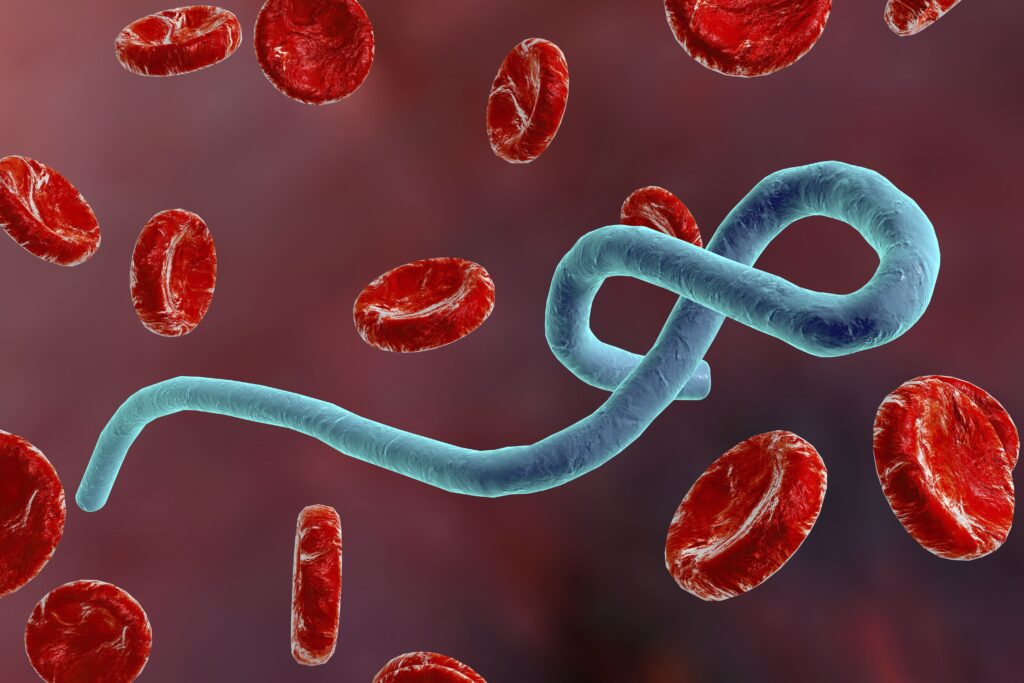The Ebola virus disease, also known as Ebola hemorrhagic fever, is a severe, often fatal illness that affects humans and other primates. Since its discovery in 1976, Ebola has caused sporadic outbreaks in Africa, drawing global attention due to its high mortality rate and potential for widespread transmission.
Introduction to Ebola Virus Disease
Ebola virus disease is caused by the Ebola virus, a member of the Filoviridae family. The disease was first identified in 1976 during simultaneous outbreaks in Nzara, South Sudan, and Yambuku, Democratic Republic of Congo. These outbreaks occurred in close proximity to the Ebola River, from which the virus derives its name.
Transmission and Spread
Ebola spreads through direct contact with the bodily fluids of infected individuals or surfaces contaminated with these fluids. Transmission can occur through blood, saliva, urine, feces, vomit, and semen. The virus can also be transmitted through contact with infected animals, particularly fruit bats, which are believed to be the natural reservoir of the virus.
Symptoms and Clinical Manifestations
The symptoms of Ebola virus disease typically appear 2 to 21 days after exposure to the virus. Early symptoms include fever, headache, muscle pain, fatigue, and sore throat. As the disease progresses, it can lead to severe symptoms such as vomiting, diarrhea, rash, impaired kidney and liver function, and in some cases, internal and external bleeding.
Diagnosis and Laboratory Testing
Diagnosing Ebola virus disease can be challenging due to its nonspecific symptoms, which resemble those of other infectious diseases. Laboratory testing is essential for confirming the diagnosis. This may involve detecting the virus’s genetic material through polymerase chain reaction (PCR) testing or identifying antibodies produced by the immune system in response to the virus.
Treatment and Management
There is currently no specific antiviral treatment for Ebola virus disease. Management primarily involves supportive care, including intravenous fluids, electrolyte replacement, and treatment of complications such as organ failure and shock. Several experimental treatments and vaccines are under development, but their efficacy remains uncertain.
Prevention and Control Measures
Preventing the spread of Ebola requires a multifaceted approach, including strict infection control practices in healthcare settings, community surveillance, and public health education. Isolation of infected individuals, contact tracing, and safe burial practices are crucial for containing outbreaks. Vaccination efforts have also been initiated to protect at-risk populations.
Global Impact and Response
Ebola outbreaks have significant economic, social, and health impacts, particularly in affected regions with limited healthcare infrastructure. International organizations, governments, and healthcare workers collaborate to respond to outbreaks, providing medical assistance, logistical support, and resources to affected communities.
Current Challenges and Future Outlook
Despite progress in understanding and managing Ebola virus disease, several challenges persist, including ongoing outbreaks in endemic regions, vaccine distribution issues, and the threat of emerging variants. Continued research, surveillance, and investment in healthcare infrastructure are essential for controlling the spread of Ebola and preventing future outbreaks.
Conclusion
Ebola virus disease remains a formidable public health challenge, with outbreaks posing significant risks to global health security. Addressing the complex factors contributing to its transmission and spread requires sustained collaboration, innovation, and investment in healthcare systems worldwide.

